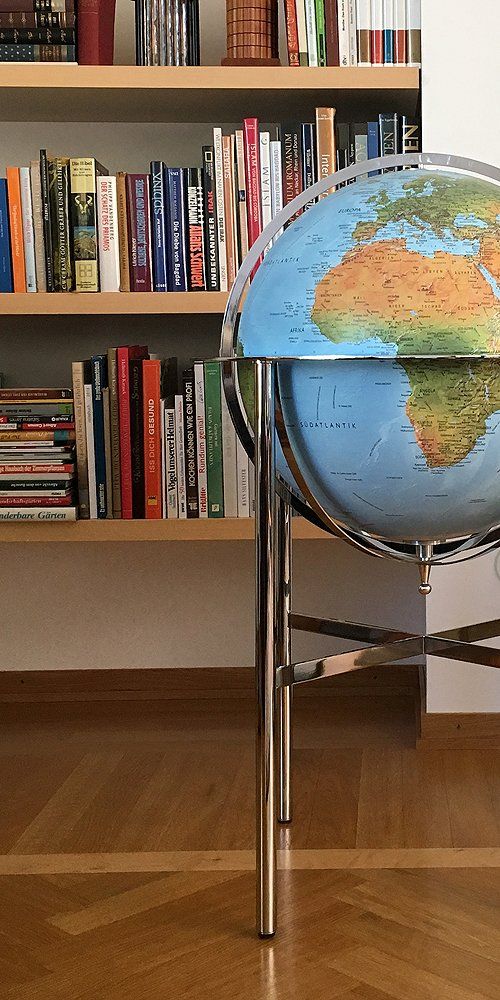LE CORBUSIER (ALFRED RÜEGG)
la mappemonde
Le Corbusier's globe is the modern implementation of the wooden frame, which has been known since the late Middle Ages, into a modern metal construction. For the furnishing of his 'pavillon de l'esprit nouveau' at the exhibition 'l'art décoratif d'aujourd'hui' in Paris in 1925, le Corbusier designed a globe alongside his famous box furniture - the 'casiers standards'.
The appearance of this globe is only preserved through contemporary photographs of the pavilion; Le Corbusier had an almost identical example made for his friend Marcel Levaillant in the same year, which is now in a private collection in Switzerland and served as a model for Alfred Rüegg's reconstruction of the globe.
In the example of the pavilion, the earth's axis was arranged at an angle, which probably caused the construction to become unstable. In the globe for Marcel Levaillant, Le Corbusier changed the construction so that he arranged the earth's axis vertically and was thus able to omit the additional metal struts. Both variants (vertical and oblique axis) are now available.
A contemporary map is now used for the globe, which, in contrast to the original (made of printed paper), is made of shockproof hard plastic.





